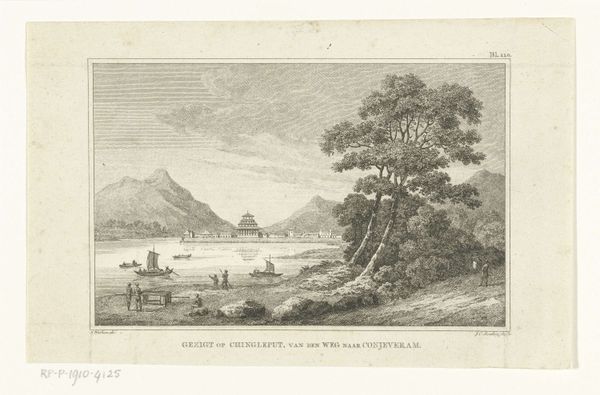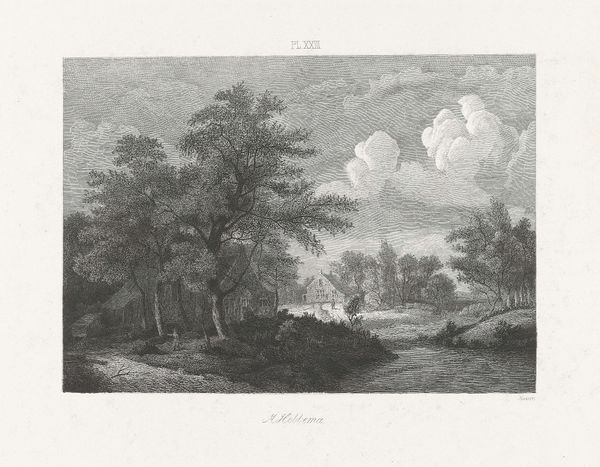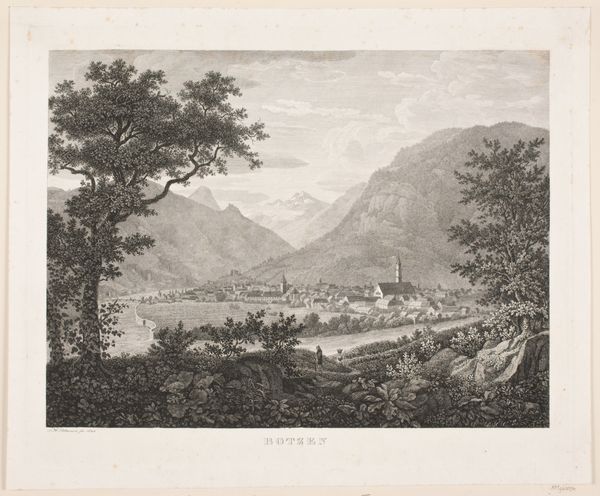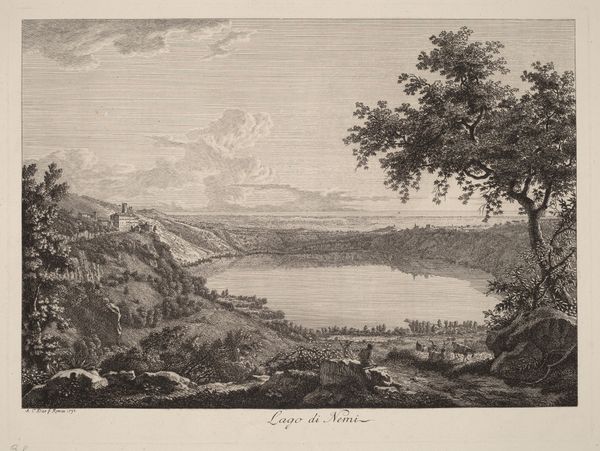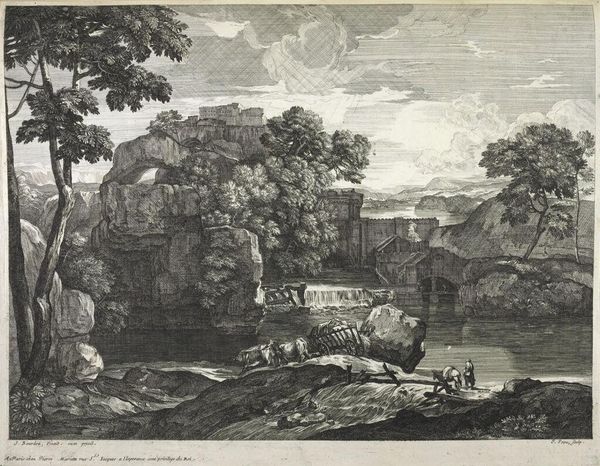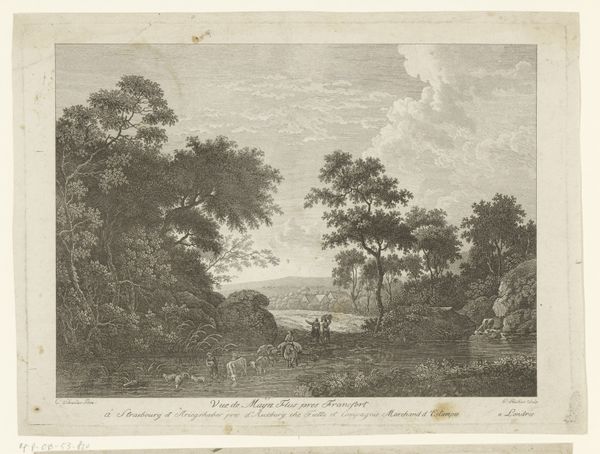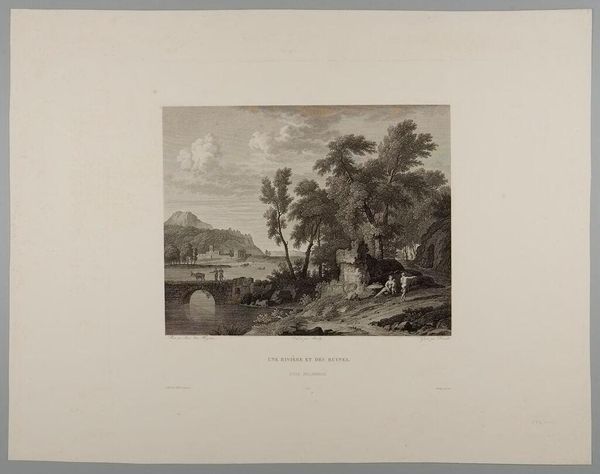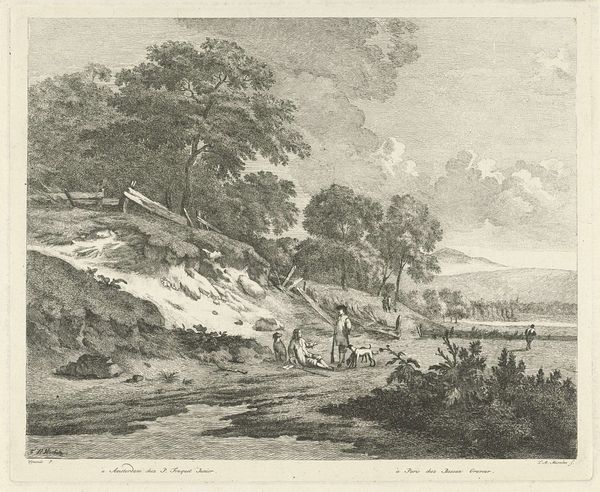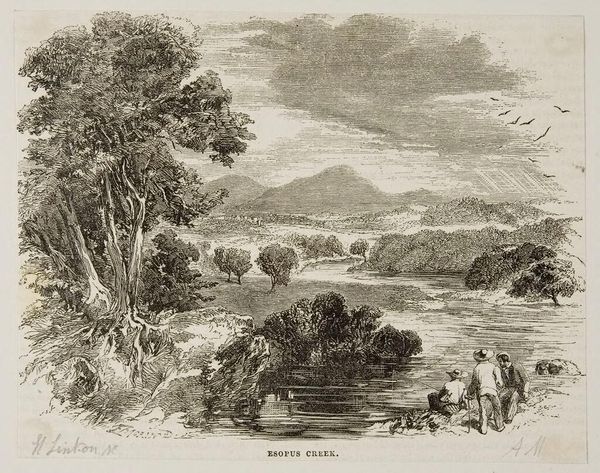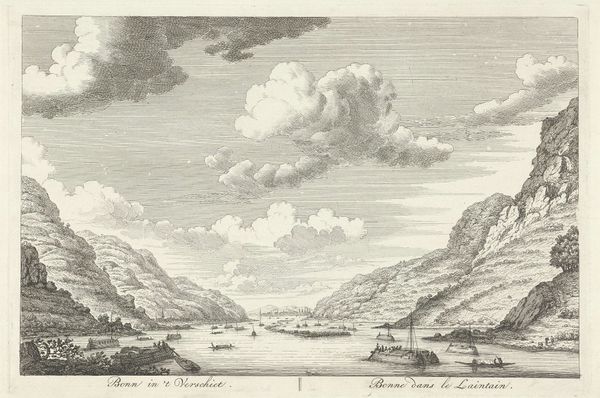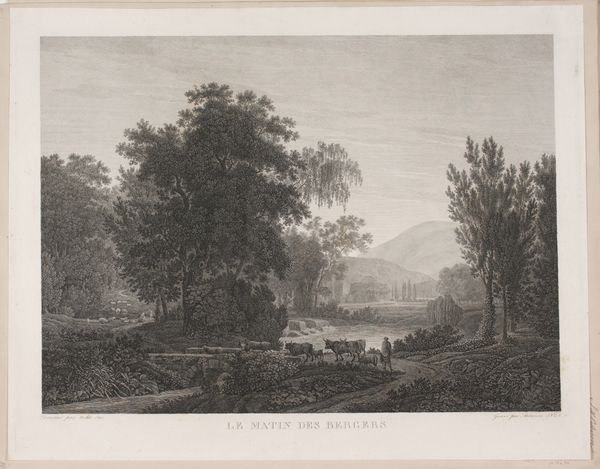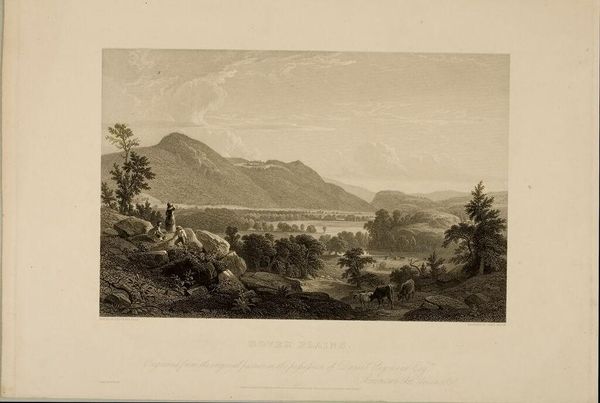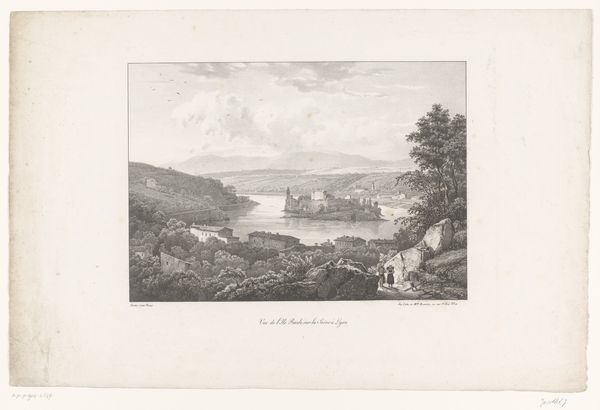
print, engraving
# print
#
old engraving style
#
landscape
#
romanticism
#
engraving
Dimensions: height 100 mm, width 138 mm
Copyright: Rijks Museum: Open Domain
Dirk Jurriaan Sluyter’s “Het slot Valkensteen, aan de Nahe” is a detailed engraving showing Valkenstein Castle on the Nahe river. Created in the nineteenth century, this picturesque scene engages with the Romantic era’s fascination with nature. The fine lines and attention to detail reflect a desire to capture and preserve the beauty of the natural world. It shows us an ideal representation of landscape rather than reality, which was characteristic of the time. The image subtly highlights social stratification through its figures; the leisure of those on horseback contrasts with the labor implied by the figures in boats. The castle itself symbolizes power and history, but appears somewhat softened in this rendering, fitting into a peaceful, rather than imposing, landscape. These elements gently propose questions about the relations between people, labor, and nature at the time. In looking at the artwork, one might reflect on how it echoes a sense of peace, while prompting a dialogue between the romanticized ideal of nature and the realities of labor and social hierarchy of the nineteenth century.
Comments
No comments
Be the first to comment and join the conversation on the ultimate creative platform.
